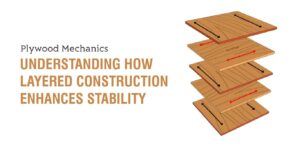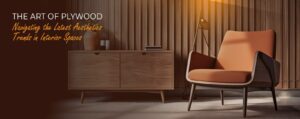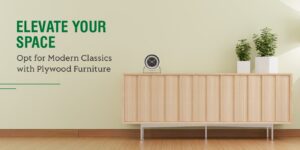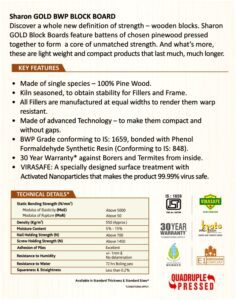

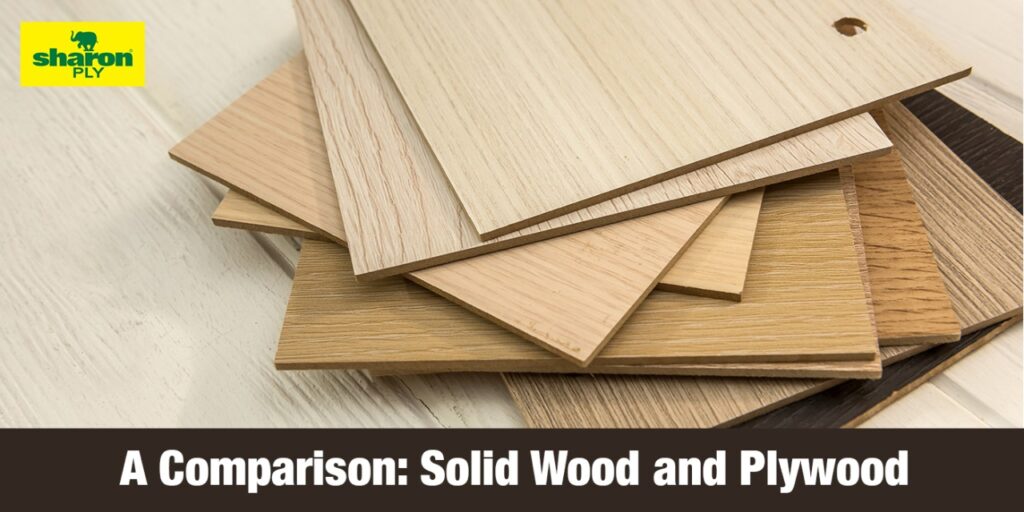

How strong is plywood when compared to solid wood? Is solid wood furniture worth the investment? If you think about the pros and cons of both solid wood and plywood, the answers to these questions are quite significant.
For starters, you should take several factors into account. But first, let’s examine the two materials.
Traditions of wooden furniture intertwine across generations as a symbol of strength and durability. Advances in woodcraft and science have produced a more sustainable and eco-friendly alternative – plywood.
Solid Wood
Typically manufactured from sawn logs, solid wood lumber is kiln-dried from slabs of wood. During the drying process, the moisture content of the wood decreases while the strength and dimensional stability of the timber increases. The shrinkage and expansion of solid wood are still affected by seasonal changes in humidity, even after it is dried.
Wood lumber is graded differently than plywood due to its complexity. There are advantages and disadvantages to both softwoods and hardwoods. The structural integrity of the wood and its appearance can be unique.
Plywood
Solid wood layers are glued together to make plywood panels of a given thickness. In each ply, the grain direction is angled 90 ° with respect to its counterpart. Plywood, as a result, gains dimensional stability and strength.
A standard thickness of plywood can range from 3/16 mm to 3/4 mm. Typical plywood sheets measure 4′ x 8.
There are many grades of hardwood and softwood plywood, depending on veneer quality and thickness.
For example, A-grade plywood face and back veneers are virtually defect-free, while X-grade plywood contains numerous knots, knotholes, cracks, and other imperfections.
Durability
Additionally, plywood products are usually termite-proof, moisture-proof, and waterproof. Furniture materials are therefore not prone to swelling or shrinking. It also exceeds solid wood in terms of maintenance and durability, despite having a wide range of price ranges and variants.
Compared to particleboard and MDF, plywood is more durable and more reliable for furniture construction. For example, museum collections around the world contain pieces of antique plywood furniture and decorative veneers.
Environment Friendly
As plywood comes from a renewable resource, it is more environmentally friendly than solid wood. Eco-friendly plywood is made with wood sourced from sustainable forests.
Consequently, it is one of the most eco-friendly decorative products on the market.
Solidity and Stability
Are you aware that plywood is more durable than steel in terms of static bending strength? Plywood’s unique layer-by-layer structure is part of the reason for its strength. As a matter of fact, plywood’s adhesives are tougher than its veneers.
Plywood’s key advantage is its uniform strength. For instance, hardwood plywood has a higher density than MDF or PVC sheets. The core veneers are arranged alternately when manufacturing plywood, ensuring equal stability throughout the sheet.
Minimal Wastage
Solid wood has a significant amount of wastage compared to plywood. Using machines, plywood ply sheets are sliced in a way that ensures minimal wood is lost. This method assures more efficient use of logs than lumber manufacturing.
Wood veneer for plywood cores is obtained from a rotary slice and cut machine, which hardly wastes wood. Solid wood blocks must be split into at least four pieces from the sides, which is a total waste.
Affordable
The natural rarity of solid wood makes it very expensive, but there are various price points available. From a pricing perspective, plywood is a clear winner. If we can save some money and help the environment, why not choose the healthier and better alternative. Therefore, plywood is a better choice than solid wood.
From furniture to buildings, plywood is a valuable building material. Plywood is a highly versatile and highly workable building material created by layering thin sheets of wood veneer to give it great strength and flexibility.


